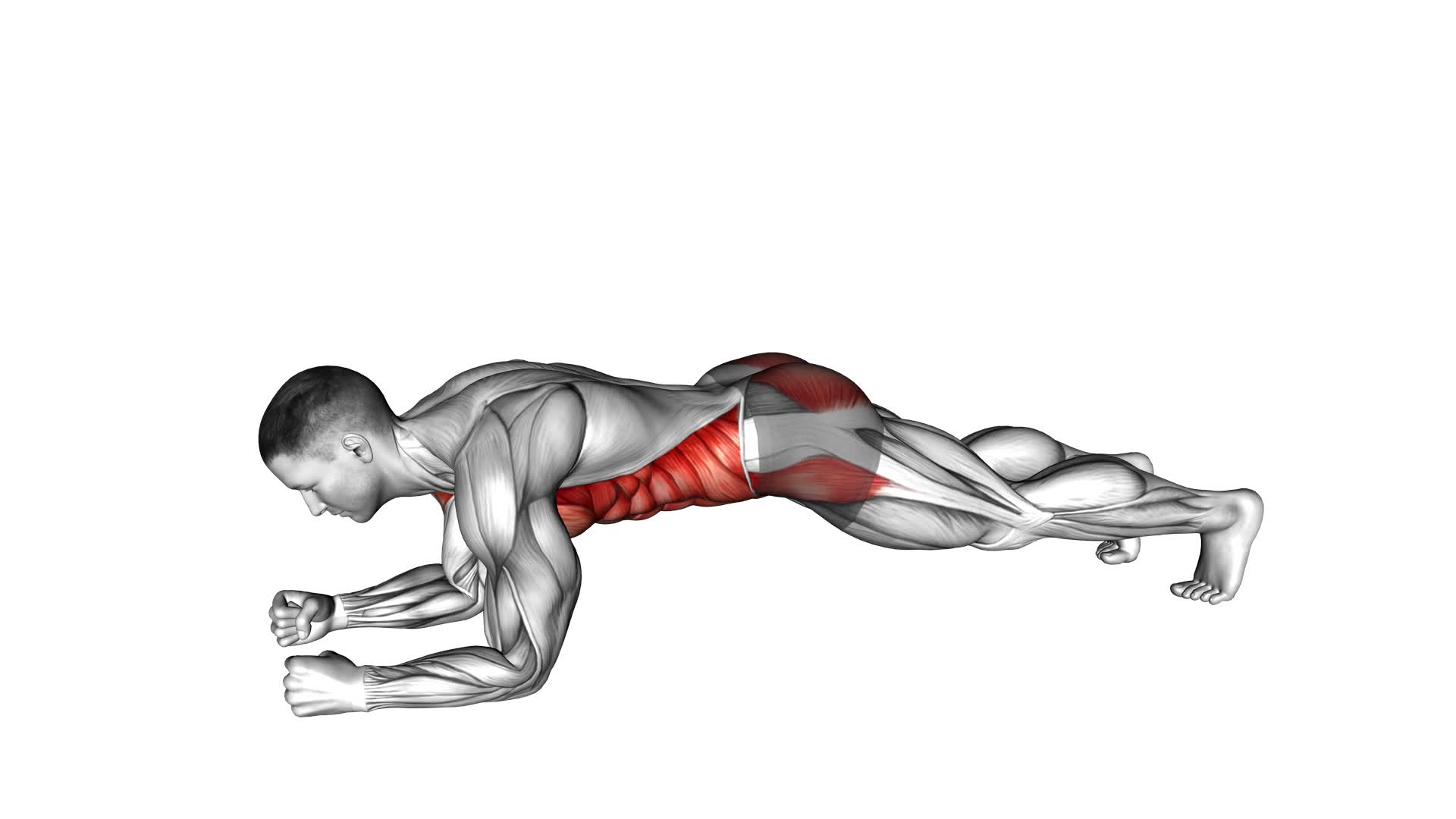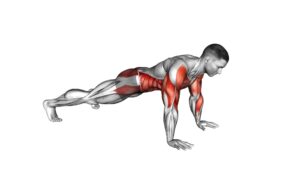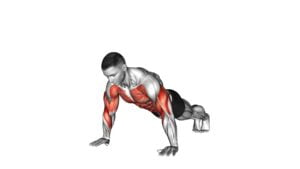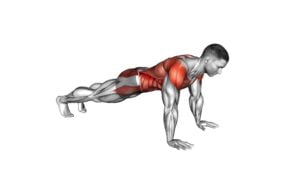Plank Shoulder Tap – Video Exercise Guide & Tips

Are you looking for an effective and challenging exercise to strengthen your core and upper body? Look no further than the plank shoulder tap!
Watch This Exercise Video
This exercise targets your abs, shoulders, and arms, helping you build stability and improve overall body strength.
In this video exercise guide, we'll walk you through the proper form and technique, discuss the benefits, offer modifications and progressions, and share valuable tips to maximize your results.
Get ready to take your fitness to the next level with the plank shoulder tap!
Key Takeaways
- Proper form and technique are essential for the plank shoulder tap exercise, focusing on stability, control, and engaging the core muscles.
- Plank shoulder taps help to develop core stability, strengthen the upper body, improve balance and coordination, and enhance body control and awareness.
- Modifications and progressions can be made to suit different fitness levels, such as starting on the knees and gradually progressing to the toes, adding a push-up between shoulder taps, or performing the exercise with one arm extended in front.
- To maximize results, consistency is key, maintaining proper form and engaging the core muscles throughout, increasing intensity by adding more shoulder taps or extending the plank hold duration, and incorporating variations like using an unstable surface or resistance bands.
Proper Form and Technique
To perform the Plank Shoulder Tap exercise with proper form and technique, focus on stability and control.
This exercise is great for improving shoulder stability and engaging your core.
Start by getting into a high plank position, with your hands directly under your shoulders and your body in a straight line from head to toes.
Engage your core by pulling your belly button towards your spine.
Once you're in the proper starting position, begin the exercise by lifting one hand off the ground and tapping the opposite shoulder.
Be sure to keep your hips stable and avoid any rotation or movement in your torso.
Lower your hand back to the starting position and repeat on the other side.
Remember to maintain a strong plank position throughout the exercise, keeping your core engaged and your shoulders stable.
Benefits of Plank Shoulder Taps
Now let's explore the benefits of incorporating Plank Shoulder Taps into your workout routine. This exercise not only helps you strengthen your upper body, but it also improves core stability. Here are four reasons why you should consider adding Plank Shoulder Taps to your fitness regimen:
- Core Stability: Plank Shoulder Taps require you to engage your core muscles to maintain a stable plank position while performing the shoulder taps. This exercise targets your deep abdominal muscles, obliques, and lower back, helping you develop a strong and stable core.
- Upper Body Strength: During the shoulder taps, you're supporting your body weight with your arms and shoulders. This exercise strengthens your shoulders, chest, and arms, enhancing your upper body strength.
- Improved Balance: Plank Shoulder Taps challenge your balance as you lift one hand off the ground to tap the opposite shoulder. By practicing this exercise regularly, you can improve your overall balance and coordination.
- Enhanced Body Control: Performing Plank Shoulder Taps requires control and precision. It helps you develop better body awareness and control, which can transfer to other exercises and daily activities.
By incorporating Plank Shoulder Taps into your workout routine, you can reap the benefits of improved core stability, increased upper body strength, enhanced balance, and better body control.
Now, let's move on to the next section to explore modifications and progressions for this exercise.
Modifications and Progressions
You can modify and progress the Plank Shoulder Tap exercise to challenge yourself further and continue to improve your strength and stability. Whether you're a beginner looking for modifications or an advanced athlete seeking advanced variations, there are options for everyone.
If you're a beginner, start by performing the exercise on your knees instead of your toes. This will decrease the amount of weight you have to support, making it easier to maintain proper form and engage your core muscles. As you become more comfortable and gain strength, you can gradually progress to performing the exercise on your toes.
For those looking for more of a challenge, there are several advanced variations you can try. One option is to add a push-up in between each shoulder tap. This won't only engage your core and shoulder muscles but also target your chest and triceps. Another variation is to perform the exercise with one arm, while the other arm remains extended in front of you. This will increase the demand on your core and shoulder stability.
Remember to always listen to your body and progress at your own pace. By modifying and progressing the Plank Shoulder Tap exercise, you can continue to challenge yourself and improve your strength and stability over time.
Common Mistakes to Avoid
To avoid common mistakes while performing the Plank Shoulder Tap exercise, focus on maintaining proper form and engaging your core muscles throughout the movement. Here are four common mistakes during plank shoulder taps and how to avoid them:
- Letting your hips sag: One of the most common mistakes is allowing your hips to drop while performing the exercise. To avoid this, engage your core muscles and keep your body in a straight line from head to toe. Imagine a plank of wood resting on your back to help you maintain the correct posture.
- Rushing the movement: Another mistake is rushing through the shoulder taps, sacrificing form and stability. Take your time and focus on maintaining control throughout the exercise. Slowly tap each shoulder, making sure to keep your body stable and balanced.
- Twisting your torso: It's important to keep your hips and shoulders square to the ground during the exercise. Twisting your torso can cause strain on your back and limit the effectiveness of the exercise. Keep your core tight and focus on maintaining a stable position.
- Holding your breath: Breathing is key to maintaining control and stability during the exercise. Avoid holding your breath and remember to exhale as you tap each shoulder. This will help engage your core muscles and support proper form.
Tips for Maximizing Your Results
To optimize your results, focus on consistency and intensity when performing the Plank Shoulder Tap exercise. This exercise is a great way to improve stability and increase core strength. Consistency is key in any exercise routine, so aim to perform the Plank Shoulder Tap at least three times a week. This will allow your body to adapt and progress over time.
When performing the exercise, make sure to maintain proper form and engage your core muscles throughout. Keep your body in a straight line from head to toe, and avoid any sagging or arching of the back. This will help target your core muscles effectively and prevent any unnecessary strain on your lower back.
In addition to consistency, intensity is also important for maximizing your results. Challenge yourself by increasing the number of shoulder taps you perform or by extending the duration of your plank hold. You can also add variations to the exercise, such as performing it on an unstable surface like a Bosu ball or using resistance bands to add extra resistance.
Remember to listen to your body and gradually increase the intensity of your workouts. Push yourself, but always prioritize safety and proper form. By focusing on consistency and intensity, you can improve your stability and increase your core strength with the Plank Shoulder Tap exercise.
Frequently Asked Questions
How Many Calories Can You Burn by Doing Plank Shoulder Taps?
You can burn calories by doing plank shoulder taps. The number of calories burned depends on various factors such as your weight, intensity level, and duration of the exercise.
Plank shoulder taps are a challenging exercise that engages multiple muscle groups, increasing the intensity and potentially leading to a higher calorie burn.
To get the most out of this exercise, focus on maintaining proper form and performing the movement with control and stability.
Can Plank Shoulder Taps Help With Improving Posture?
Plank shoulder taps can definitely help improve your posture. By engaging your core muscles, these exercises work to strengthen the muscles that support your spine. This increased core strength can lead to better alignment and posture, as well as improved stability and balance.
To ensure you're getting the most benefit from plank shoulder taps, focus on maintaining a proper form and technique. This includes keeping your body in a straight line, engaging your core, and avoiding any sagging or arching of the back.
Are Plank Shoulder Taps Safe for People With Lower Back Pain?
Plank shoulder taps can be a great exercise for improving core strength. However, if you have lower back pain, it's important to proceed with caution.
While plank shoulder taps can help strengthen your core, they can also put strain on your lower back if not done correctly.
It's always a good idea to consult with a professional or consider alternative exercises that are more gentle on your lower back.
Can Plank Shoulder Taps Be Incorporated Into a Full-Body Workout Routine?
Incorporating plank shoulder taps into a full-body workout routine can be a great way to challenge your core and upper body strength. They help improve stability and engage multiple muscle groups simultaneously.
To add variations for advanced training, you can try elevating your feet on a stability ball or incorporating a push-up after each tap.
Remember to maintain proper form and listen to your body to avoid any discomfort or injury.
How Long Should I Hold Each Tap in the Plank Shoulder Tap Exercise?
When performing plank shoulder taps, it's important to focus on the quality of the movement rather than the duration of each tap. The ideal time to hold each tap is about 1-2 seconds. This allows for proper engagement of the core muscles and helps improve stability and balance.
Conclusion
In conclusion, plank shoulder taps are a highly effective exercise that targets the core, shoulders, and upper body. By maintaining proper form and technique, you can reap the benefits of improved stability, strength, and coordination.
With the option to modify or progress the exercise, it can be tailored to your fitness level. Avoiding common mistakes and following tips for maximizing results will ensure that you make the most out of this challenging exercise.

Author
Years ago, the spark of my life’s passion ignited in my mind the moment I stepped into the local gym for the first time. The inaugural bead of perspiration, the initial endeavor, the very first surge of endorphins, and a sense of pride that washed over me post-workout marked the beginning of my deep-seated interest in strength sports, fitness, and sports nutrition. This very curiosity blossomed rapidly into a profound fascination, propelling me to earn a Master’s degree in Physical Education from the Academy of Physical Education in Krakow, followed by a Sports Manager diploma from the Jagiellonian University. My journey of growth led me to gain more specialized qualifications, such as being a certified personal trainer with a focus on sports dietetics, a lifeguard, and an instructor for wellness and corrective gymnastics. Theoretical knowledge paired seamlessly with practical experience, reinforcing my belief that the transformation of individuals under my guidance was also a reflection of my personal growth. This belief holds true even today. Each day, I strive to push the boundaries and explore new realms. These realms gently elevate me to greater heights. The unique combination of passion for my field and the continuous quest for growth fuels my drive to break new ground.







